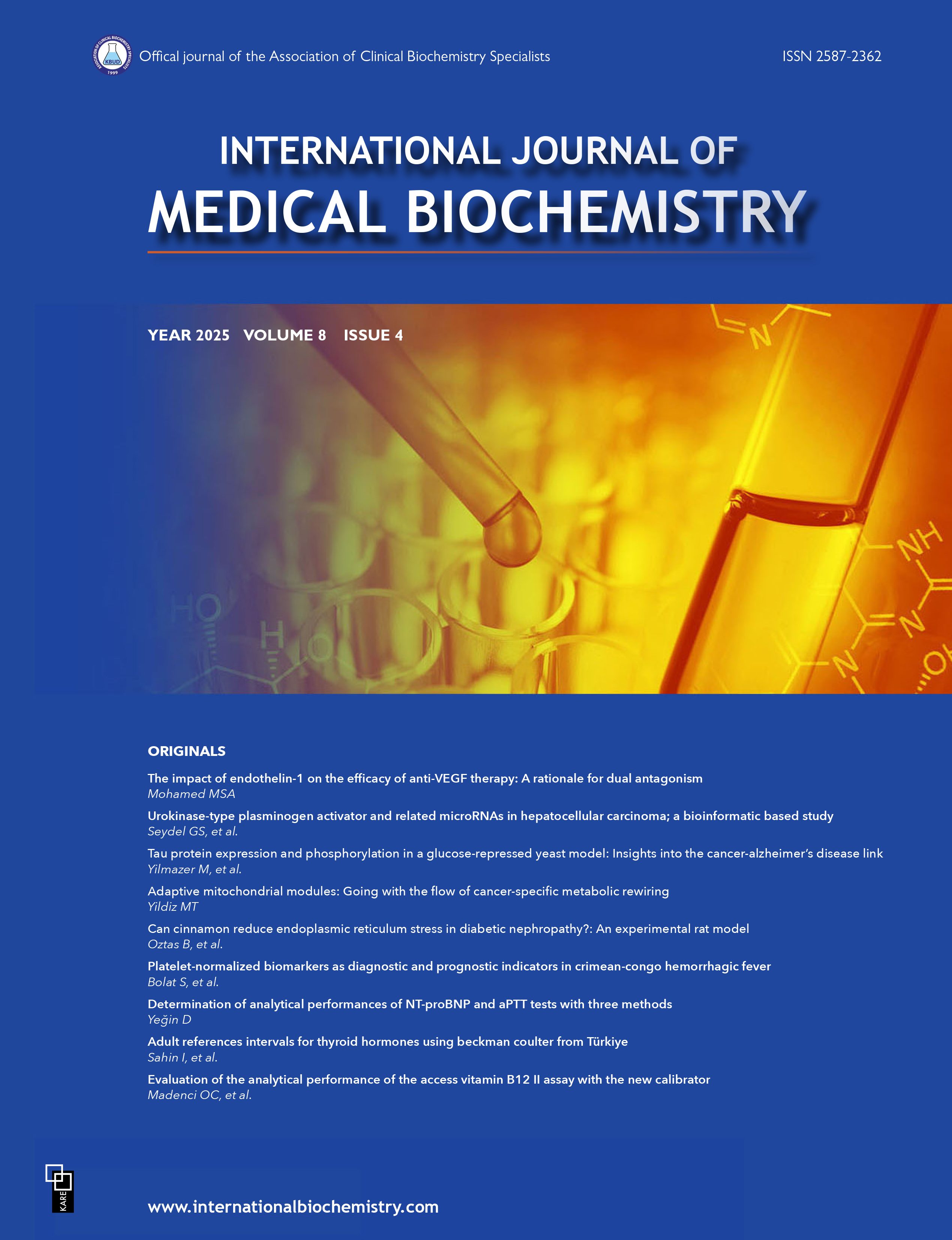Performance of a multi-criteria algorithm based on urinalysis in predicting negative urine culture results
Didem Barlak Keti1, Sabahattin Muhtaroğlu1, Pınar Sağıroğlu21Department of Medical Biochemistry, Erciyes University Faculty of Medicine, Kayseri, Turkey2Department of Medical Microbiology, Erciyes University Faculty of Medicine, Kayseri, Turkey
INTRODUCTION: Urinalysis by automated urine analyzer, including microscopy and dipstick test, is easy, rapid, and inexpensive. Among these parameters, leukocyte count (WBC) or leukocyte esterase (LE) has relatively sufficient sensitivity in urinary tract infection (UTI) detection. Urine culture is accepted as the gold standard for the diagnosis of UTI. Unnecessary culture requests constitute the majority of the microbiology laboratory workload. This study aimed to evaluate the performance of a multi-criteria algorithm by using urinalysis in predicting negative urine cultures.
METHODS: During a 2-week period, randomly selected 600 urine samples that reached the microbiology laboratory for urine culture were subjected to chemical and microscopic urinalysis without waiting. Urinalysis was performed using Iris iQ200 (Iris Diagnostics, Chatsworth, USA). LE >25 μL-1, nitrite positive, and WBC >5 per HPF were accepted as abnormal/positive. The sensitivity and specificity were also calculated by Receiver operating characteristic analysis at alternative threshold values for all small particles. A multi-criteria algorithm based on these urine parameters was developed, and its performance was evaluated by determining specificity, sensitivity, negative predictive value (NPV), and positive predictive value.
RESULTS: Multi-criteria algorithm based on urinalysis gave false-negative results for only 3 (0.5%) samples. This algorithm had 98.9% NPV and eliminated 47.4% of urine samples from the culture workflow.
DISCUSSION AND CONCLUSION: This algorithm may reduce unnecessary culture requests and more effective use of time and resources.
Manuscript Language: English







